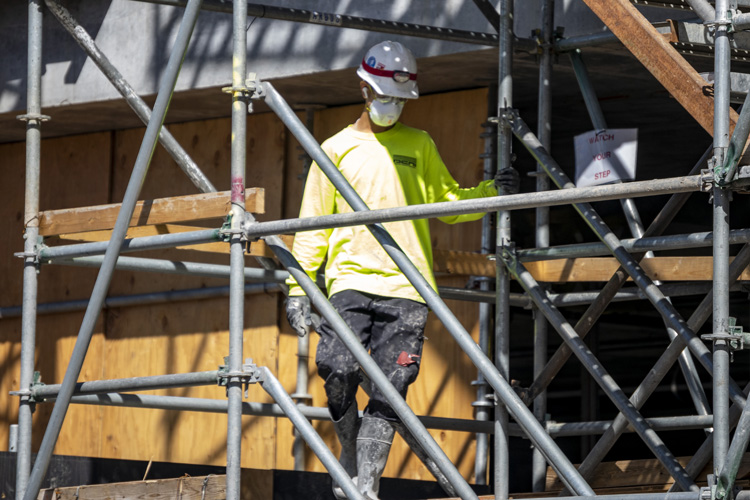Although many employers in the construction industry have continued to operate as essential businesses during the COVID-19 pandemic, some have allowed certain employees to work from home where possible. As states begin to loosen restrictions and “reopen” for business in the coming weeks and months, construction employers will need to implement new, and possibly permanent, policies and guidelines designed to keep the construction workforce safe.
We have prepared a checklist for construction employers who are considering their options and requirements for bringing employees back to work, and protecting employees who have continued to work, during the ongoing pandemic crisis. This checklist incorporates current guidance from the CDC, OSHA and the EEOC, and it is intended to provide a roadmap for the coming weeks and months. The checklist is also subject to state and local restrictions and requirements, which are changing rapidly and could be more onerous than the federal guidance.
1. Employee Testing and Screening Procedures
The EEOC recently stated that employers may test their employees for COVID-19 and/or screen them for symptoms (e.g., fever, sore throat) before they can return to the workplace, whether on a construction site or in an office environment. The new EEOC guidance can be found here. This testing must be accurate and reliable, and the results must be kept confidential, so the employer should consult with counsel and a healthcare provider before proceeding with COVID-19 testing and screening procedures.

Please note that although COVID-19 testing and screening are not currently mandatory for employers, both could be used as evidence that the employer is making good-faith efforts to protect its workforce. However, employers must also consider the pros and cons of these procedures. For example, testing and screening procedures that are not sufficiently “accurate and reliable” could lead to a false sense of security, or alternately, a false sense of concern, if the testing and screening provides false positive or false negative results. Therefore, rather than implementing on-site testing and screening, some employers may want to consider asking their employees to certify daily that they do not have any known symptoms. While this option may not screen out all infected employees, it removes the employers’ obligation to conduct on-site testing and screening while also demonstrating a good-faith effort to protect workers from the virus.
If an employee does test positive for COVID-19, employers should inform others who work at the same jobsite that an unnamed employee has been diagnosed with the virus. This gives employees an opportunity to evaluate their risk of potential exposure and take personal precautions. The employer should not disclose the infected employee’s identity to coworkers, but the company can provide some details about the infected worker’s job duties and general location on the jobsite.
2. Worker Safety Precautions
Employers should follow OSHA guidance for employees working in the construction industry which includes:
• Require workers to stay home if they are sick. These workers may be eligible for paid sick leave under the federal Families First Coronavirus Response Act (FFCRA), or state paid sick leave laws and employer sick leave benefits. However, employers are not required to provide additional sick leave for employees who have exhausted all potential sick leave benefits. With that said, employers may provide additional paid sick leave to sick workers as long as they make it available to all workers.
• Allow workers to wear masks over their nose and mouth to prevent spread of the virus, and provide masks and gloves to all workers, if possible. Employers should prepare written policies regarding the use of masks and other personal protective equipment (PPE) in the workplace, and they should enforce those policies through the use of disciplinary action if workers do not comply with them. Employers should also be aware of the risk of liability if they require employees to work without appropriate PPE. According to OSHA, employers have an obligation to assess the hazards in their workplace and take appropriate action to protect workers, which could include allowing them to wear PPE if they choose to do so.
• Continue to use other normal control measures, including PPE, that is necessary to protect workers from other job hazards associated with construction activities. Train workers how to properly put on, use/wear, and take off protective clothing and equipment.
• Advise workers to avoid physical contact with others, and direct employees, contractors, and visitors to increase personal space to at least six feet, where possible. Where work trailers are used, all workers should maintain social distancing while inside the trailers, and only necessary employees should enter the trailers. Desks and workspaces may need to be reconfigured in order to maintain social distancing in work trailers.
• Encourage respiratory etiquette, including covering coughs and sneezes.
• Require employees to use individual water bottles instead of using a common source of drinking water, such as a cooler.
• Promote personal hygiene. If workers do not have immediate access to soap and water for handwashing, provide alcohol-based hand sanitizer containing at least 60 percent alcohol throughout the worksite and office spaces.
• Use EPA-approved cleaning chemicals from List N, or products that have label claims against the coronavirus.
• To the extent tools or equipment must be shared, provide and instruct workers to use alcohol-based wipes to clean tools before and after use.
• Limit in-person meetings and the number of workers in attendance. Use video conferencing platforms for meetings, if possible, and use social distancing practices in conference or meeting rooms.
• Clean and disinfect portable jobsite toilets regularly. Hand sanitizer dispensers should be filled regularly and frequently touched items (e.g., door handles and toilet seats) should be disinfected on a regular basis.
• Encourage workers to immediately report any safety and health concerns.
3. Employee Leave Options
Construction employers may have employees who are afraid to come to work during and after the crisis, possibly due to an underlying health condition. Consider whether such employees might be entitled to leave and/or accommodations under the FFCRA, the Americans with Disabilities Act (ADA), the Family and Medical Leave Act (FMLA), state paid sick leave laws, or workers’ compensation laws. Employers will need to evaluate requests for COVID-related leave and accommodations on a case-by-case basis.
Employees who are considered to be high-risk for severe illness from COVID-19, such as people age 65 or older and those with underlying conditions such as diabetes, heart disease, hypertension, chronic lung disease, severe obesity, chronic kidney disease, liver disease, and people who are immunocompromised, should be given special consideration for continued teleworking arrangements if they have been advised by a health care provider to self-quarantine during the pandemic. While employers should not single out employees based on their age or the employer’s knowledge of any underlying health conditions, they should be sensitive to these workers’ potential need for special arrangements. Because the CDC has specifically identified these high-risk groups, employers should feel more comfortable about having confidential discussions with employees regarding their particular situation.
4. Staggered Work Schedules
Construction employers will want to consider how and when they start bringing employees back to work. They may want to start by giving employees a choice to stay home and begin the process voluntarily. They can also consider staggering days or hours when employees are on the worksite or in the office so fewer people are present at the same time. Lunch and other breaks can also be staggered. Using a gradual process could be operationally beneficial and may also mitigate risk for employees who can conceivably do their jobs from home until the crisis and its effects have passed.
5. Revised Policies and Handbooks
Employers should consider revising their employee handbooks and manuals to reflect any new pandemic-related policies and recirculate these documents to their employees for them to review and acknowledge. It is important to have employees document their receipt of the new policies, and employers should keep the employee acknowledgments in personnel files. Employees who violate the new policies should be counseled and/or subject to disciplinary action if necessary.
6. Regular and Effective Communication
Since in-person meetings and training sessions are not possible right now, it is more important than ever for employers to communicate revised policies and directives to their employees on a regular basis. Employers can prevent liability if they regularly communicate policies that prioritize the health, safety and well-being of their employees.
Melanie Pate and Frances Haynes are attorneys with Lewis Roca Rothgerber Christie LLP. For more information, contact Frances Haynes at fhaynes@lrrc.com, Melanie Pate at mpate@lrrc.com or visit www.lrrc.com.




